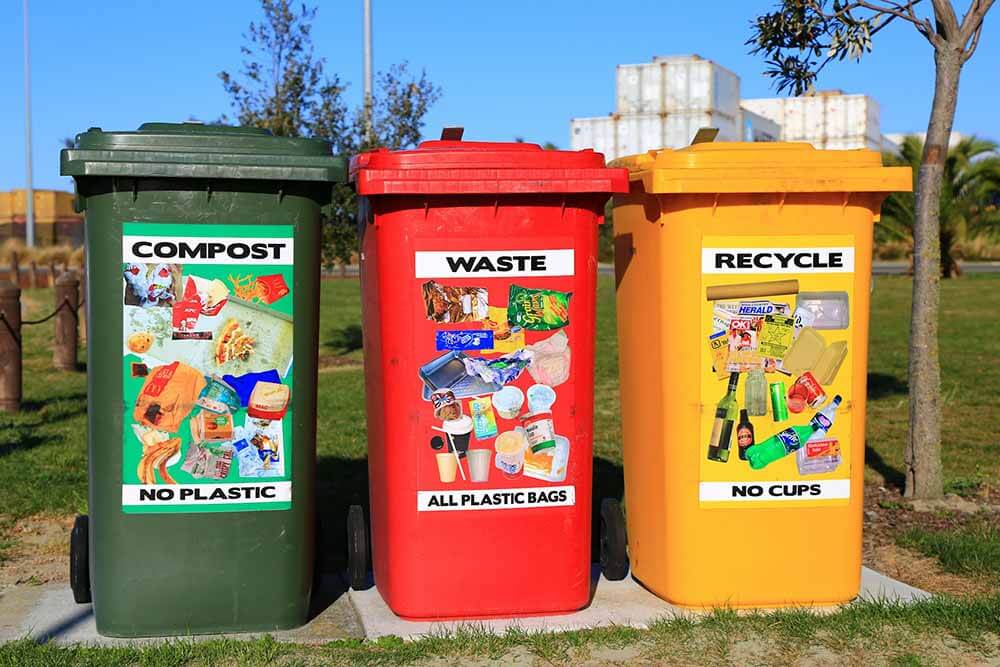A Step-by-Step Guide to Composting in Restaurants

Composting in restaurants is a great way to save social resources and support environmental sustainability. In this blog, we will take you to see how to compost in restaurants and how this way benefits your restaurant business and environment.
What is Composting?
Composting refers to the natural process in which microorganisms decompose organic matter into fertilizer under mature composting conditions. This organic matter including food scraps, yard waste, and plant materials, contains elements suitable for being biodegraded into fertilizers.
Benefits of Composting
Have you considered composting in your restaurant? Do you know the benefits of composting in your restaurant for both your establishment and the environment? Let’s take a look.
Benefits of Composting for the Environment
- Reduced Greenhouse Gas Emissions: If the restaurant’s organic waste is placed in a landfill, microorganisms will decompose the organic matter and produce a very large amount of methane gas due to the lack of oxygen. If these organic wastes are processed through composting, microorganisms can decompose these organic wastes in an environment with sufficient oxygen, greatly reducing the production of methane. Methane is a highly potent greenhouse gas that affects climate change.
- Soil Enrichment: Compost can improve soil structure, improve soil texture, increase soil water retention, promote soil aeration, reduce soil pH, and reduce the use of chemical fertilizers, thereby enabling the soil to grow healthier plants and optimize the entire ecosystem.
- Conservation of Landfill Space: No matter in any country, the pressure on landfills is huge, and the environment around landfills is also very bad. Composting organic waste can relieve pressure on existing landfills and reduce the need for new landfills.
Benefits of Composting for Business
- Cost Savings: To transport your restaurant’s organic waste to a landfill, you’ll need to pay shipping costs, a landfill service provider’s service fee, etc. These costs are not required if organic waste is composted in the restaurant. In addition, if you grow plants and flowers in your restaurant, the organic fertilizer produced by your compost can improve the growing environment of the plants and reduce the cost of purchasing commercial fertilizers.
- Public Relations and Customer Loyalty: You can promote your range of composting methods in the restaurant, share your composting experiences, and even invite customers to observe your composting yard. This will leave a very good impression of your restaurant among environmentally conscious customers, and through their word-of-mouth, your restaurant’s reputation will become better and better.
- Local Partnerships: Compost from the restaurant can be donated to local farms and community gardens for growing crops and maintaining flowers, fostering community relationships.

Identify Compostable Materials
Not all organic matter is compostable, and not all compostable items are suitable for use in your restaurant’s composting system.
What are the Common Compostable Materials in Restaurants?
- Fruit and vegetable scraps
- Coffee grounds and tea bags
- Eggshells
- Nutshells
- Non-greasy food scraps (e.g., rice, pasta, bread)
- Paper napkins and towels (unbleached, without any plastic coatings)
- Biodegradable food containers and tableware (certified compostable)
What is Non-Compostable Waste in Restaurants?
- Meat
- Dairy
- Greasy food scraps
- Non-compostable plastics
How to Compost Step by Step in Restaurants?
Composting the organic waste in your restaurant will benefit you a lot, so let us take a look at how to compost in restaurants.
Prepare Supplies for Waste Sorting
- Gloves: Choose gloves made of durable materials that are easy to clean to protect your hands from contamination and odor when handling food scraps and other composting materials.
- Compost Bins: If possible, consider keeping different types of waste separate. Use a durable and appropriately sized compost bin to contain waste and facilitate decomposition.
- Compostable Liners: Line compost bins with certified compostable bags to prevent contamination and simplify waste handling.
- Aeration Tools: For on-site composting, purchase compost-turning tools or tumblers to aerate the compost and speed up decomposition.
- Compostable Bin Location: Need to find a well-ventilated, sunny place for the compostable bin to facilitate the decomposition process.
- Signage and Labels: Clearly label compost bins to educate staff and customers on proper waste sorting.
- Training Materials: Prepare the training materials to educate your staff on composting practices and procedures.
Sort the Waste
- Sorting Guidelines: Provide clear guidelines and procedures to employees, and tell them what waste can be composted, what waste cannot be composted, what waste can be recycled, and what waste cannot be recycled. It’s best to accompany this with visuals.
- Practical Training: Conduct some practical training courses for employees to train them to put garbage into appropriate sorting bins. During this period, practical problems they encountered can be solved.
- Labeling and Signage: Make sure the compost bin is clearly marked with information to prevent contaminants from entering the compost bin.
- Regular Reinforcement: Training courses are arranged from time to time, and employees are assessed from time to time to see whether they have professional knowledge and practical abilities in composting and waste classification. Recognize and encourage some employees who are actively involved in composting.
Weigh and Record
- Establish Baseline Data: Before composting, you need to record the amount of food waste your restaurant generates first. This baseline data can be a reference for future comparison.
- Weigh and Record: Continuously monitor the amount of compostable waste from the dining area and kitchen. Weigh the compost collected regularly and keep detailed records.
- Calculate Diversion Rates: The food waste diversion rate is calculated by comparing the weight of compostable waste to the weight of total food waste produced. Express the diversion rate as a percentage to track progress over time.
- Track Trends: Monitor diversion rates over weeks, months, and years to identify trends and patterns in waste generation and composting efficiency.
Analyze the Data
- Data Analysis: Analyze monitoring data and use it to identify the strengths, weaknesses, and areas for improvement in your composting program.
- Targeted Education: Through data analysis, you can see many problems and train employees accordingly to gradually improve them.
- Optimize Collection Frequency: Adjust the frequency of waste collection based on the waste generation rate and storage capacity.
- Continuous Improvement: Data does not only come from recorded numbers but also requires continuous communication with employees and customers to improve and perfect the composting process.
- Set Goals: Set specific waste diversion and compost quality goals, and assess progress towards goals regularly.
Composting in restaurants is a very great way to benefit your own business and our environment. We encourage every restaurant to join their own composting program and use compostable packaging. Composting takes patience and time, but the benefits it brings to you and the environment are increasingly significant.
Related Blog:

John Q
John Q is Eco March’s Product Manager. With 5 years of prior experience in the food industry after graduating from university, he has been an integral part of Eco March. He excels in creating and developing eco-friendly food packaging products with a keen focus on enhancing the consumer experience.


